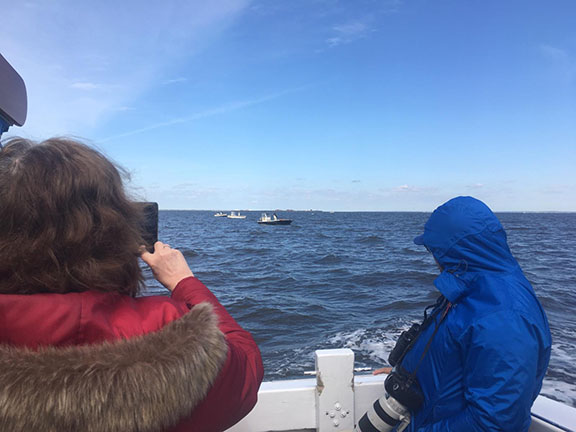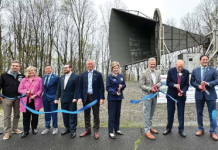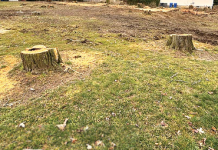By Eileen Moon
ATLANTIC HIGHLANDS – With the pace of life in the Two River area, it can be all too easy to forget that we live in one of the most beautiful places in New Jersey. And almost as easy to forget that we’re not the only living creatures who call it home.
That’s one of the reasons why members of the Navesink Maritime Heritage Association and their counterparts in the New Jersey Audubon Society host a once-a-year bird-watching cruise on the river.
It’s also a fundraiser for NMHA, a nonprofit founded in 1999 with the mission of helping kids and adults “discover and sustain” the heritage and environment of the Navesink.
“We’re a local nonprofit,” said board member Michael Humphreys. “We focus on history, we focus on the environment of local waters. We’re trying to build up education and awareness of our beautiful local waters.”
Having an annual spring birding cruise was the brainchild of NMHA president Rik van Hemmen, noted Chuck Abel, an NMHA and NJ Audubon member who served as narrator for this year’s cruise.

About 40 bird-watchers paid $40 each to take a three-hour tour on The Mariner, with nar- ration by Navesink Maritime Heritage Association member Chuck Abel. The event was a fundraiser for the association. Photo by Eileen Moon
Originally set for April 27, the event was rescheduled to May 11 due to bad weather.
Fortunately, the new date was right out of central casting, a breezy, blue-sky morning perfect for an adventure on the water.
At 8:30 Saturday morning, some 40 camera- and binocular-carrying bird-watchers climbed aboard Capt. Dan Schade’s boat The Mariner for a three-hour tour.
As birders breakfasted on bagels, coffee and juice, NMHA’s Abel manned the microphone, providing an overview of the Two River area’s winged visitors for birders to look for.
According to a 2016 survey by the U.S. Fish and Wildlife Service, some 46 million Americans identify themselves as bird-watchers.
While many of us confine our bird-watching to backyards and duck ponds, it isn’t necessary to venture too far from home to see an amazing assortment of wildlife.
Among the feathered creatures who live in or visit the area are oyster catchers, loons, cormorants, herons, osprey, piping plovers, vultures and red-tailed hawks, among many others.
As the boat meandered along the shore, around the tip of Sandy Hook and back down the river toward the Navesink portion of the Shrewsbury, Abel pointed out the various species diving for seafood or nibbling their way along the water’s edge.
Some on the cruise were seasoned birders able to identify the winged creatures flying high above the boat with their naked eyes. Others were drawn to the prospect of a day out on the river and the opportunity to get a bird’s-eye view of the rivers.
On the shore, cruisers could see an osprey in its nest. Ospreys, which mate for life, were once on the endangered list because of the toxic impact of DDT, but the species has come back strongly since use of the pesticide was curtailed. “They’re one of the birding success stories,” Abel said.
With the skyline of Manhattan in the foreground, the boat rounded the tip of Sandy Hook, where surf-casters on the shoreline tried their luck in the waves. When people are around, birds tend to scatter and the clear weather had brought a lot of beachcombers to Sandy Hook.
Out in the bay, the boat cruised by a group of clammers raking the sea floor from their small watercraft.
Once there were more than 500 clammers working the bay, Abel said. Now, like an endangered species, only about 50 people earn their living this way.
Further up the Shrewsbury the boat passed a group of pound nets – called that, Abel explained, because fishermen pound wood poles into the sea floor to string their nets across. An array of sea gulls was perched on the poles, enjoying the bay equivalent of a fast food drive-through for feathered creatures.
Riding along the mainland shoreline, Abel pointed out a small beach where gulls were dining on horseshoe crab eggs. Further down the Jersey Shore, the eggs provide critical sustenance to red knots as well, small birds that travel the Atlantic Flyway from Canada to the Caribbean each year and rely on their stop at the Jersey Shore for necessary fuel.
As the boat rounded the turn into the Navesink portion of the Shrewsbury River, remote spots of movement along a sandbar materialized into a spectacular sight – a string of five bald eagles along the rich mudflats of the river to the east of Barley Point and, further up, one soaring in the sky.
“Everybody got lucky,” Abel said.
This article was first published in the May 16-22, 2019 print edition of The Two River Times.














